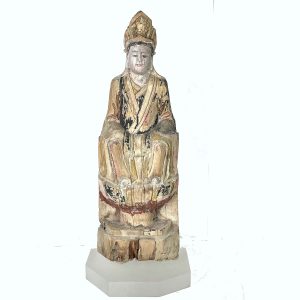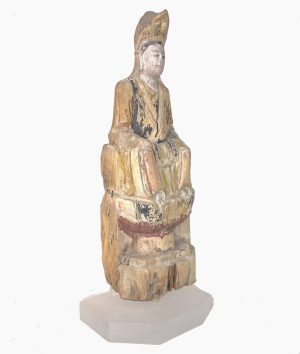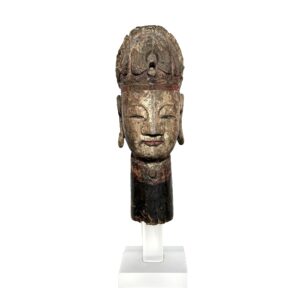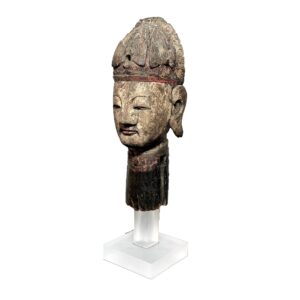Showing 13–15 of 15 results
-


$525.00
The Queen Mother of the West (Xiwangmu) is the most significant of the female Taoist deities and is viewed as having magical powers to controls life, death, creation and destruction and determines the lifespan of every living being. She lives with her husband the Jade Emperor in Kunlun Mountain where she attends her famous garden…
-


$1,375.00
SOLD | H: 23.25″ W: 9.25″ D: 6.5″
This Queen Mother of the West, the highest ranking female Taoist deity was probably displayed as a pair along a statue of Guanyin, the most significant Buddhism female (Guanyin on a Lotus Pedestal (16206B) highlighting the importance and similarity of these revered female images Like the Guanyin, the Queen Mother’s delicately carved face has half closed eyes, serene composure mouth with a hint of a smile, which is more Buddhist than Taoist. Her headdress, centered by her iconic phoenix, rests under a hood extending to her shoulders and back. She wears a high collared three-layered Taoist robe, her hands covered by a ritual cloth.
-
Sale!


$625.00 Original price was: $625.00.$395.00Current price is: $395.00.
H: W: D: | CALL 213-568-3030 OR EMAIL [email protected] FOR SHIPPING.
Xiwangmu is the most important and first female deity in the Taoist pantheon, identified by a single phoenix in her headdress. This unique antique carving is a puppet head or an attachment to a larger figure where her headdress has three phoenixes instead of her iconic single phoenix. Beautifully carved with a rich patina, it is mounted on a lucite stand.
End of content
End of content






